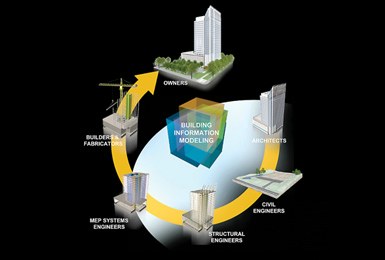First, the need for accurate, high-quality and dependable modeling services in the architecture, engineering, construction, and owner/operator (AECO) industry is growing at an incredible rate. This need has impacted every member of the building ecosystem. Everyone from the designer to the manufacturer to the facility manager is faced with growing pressure to deliver more efficient projects and streamline operational procedures.
Second, let's consider the standard project closeout package delivered to a facility manager from the building's design and construction firms. This package traditionally included boxes upon boxes full of paper documents, CDs, and USB drives all containing information vital to the upkeep of the building. This can range from maintenance schedules for various pieces of equipment, specific details on the buildings' parameters, lists of warranty expiration dates, and the location of lighting fixtures and power devices.
Now let's revisit the building with over 5,000 lighting fixtures and 22,000 power devices. With the advent of building information modeling (BIM) technologies, the building manager can now utilize fully intelligent 3D design models to make sure the building is functioning properly today, as well as 20 years into the future. This is all thanks to the seamless integration of all the building information into a single source - the model. When provided as a fully accessible closeout package, this can transform facilities management.
This is significant because:
- Owners and operators can rely on actionable next steps with closeout packages that are accessible on one platform.
- With better insight into operations, facility managers can work in anticipation of an issue rather than in reaction to a problem.
- Operations can be streamlined for years beyond the initial project phase, saving time and money.
The benefits of having all this data readily accessible go far beyond space planning. Imagine an issue such as a pipe leak occurring. With a BIM model containing all the detailed information regarding the interconnected systems and their associated parts, manuals, and other relevant documentation, a facility manager can easily locate the source of the problem and requirements to fix it. And a problem that may have taken days and a significant amount of resources to address now takes mere minutes.
The benefits of BIM for facilities management apply to any facility owner in any industry. While arguments against change may persist, you'd be hard-pressed to find a manger in any organization not looking for ways to streamline operations.
With the ability to effectively manage maintenance schedules, repairs, renovations, and costs, BIM stands to bring new life to the AECO building ecosystem. It is time for owners, operators, and managers to get on the BIM bandwagon and learn to leverage the model as a means of intelligent building management.
